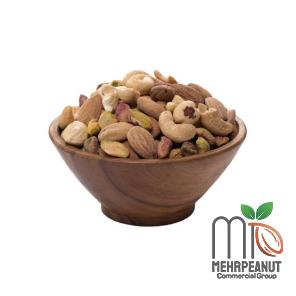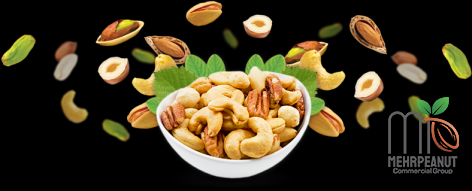Peanut in American Sign Language (ASL) is a simple, yet charming sign that beautifully captures the essence of this beloved legume. ASL, a visual-gestural language utilized by Deaf and hard of hearing individuals in the United States and parts of Canada, relies on handshapes, movements, and facial expressions to convey meaning. The sign for peanut involves a unique handshape and motion that mimics the act of cracking open a peanut shell and popping the delicious nut into your mouth. To sign peanut in ASL, begin by forming a loose fist with your dominant hand. Next, extend your pinky finger and thumb, creating a shape that resembles a small, rounded object. Bring your hand to your mouth, slightly cupping it as if holding a peanut, and mime the action of popping the imaginary peanut into your mouth.

.
 This fluid motion encapsulates the tactile experience of enjoying peanuts while also paying homage to the physical appearance of the nut itself. The beauty of ASL lies in its ability to capture the essence of objects, actions, and concepts through visual and kinesthetic means. When signing peanut, individuals engage not only their hands but also their facial expressions and body movements to convey the full sensory experience of interacting with this popular snack. The sign for peanut encapsulates the tactile sensation of holding a small, round object in your hand, the audible crunch of biting into the shell, and the savory taste that follows. Moreover, the sign for peanut embodies cultural significance within the Deaf community. Peanuts are a common snack enjoyed by people of all backgrounds, making them a familiar and relatable subject for sign language users. By incorporating signs for everyday objects like peanuts into their lexicon, Deaf individuals enrich their communication and expressiveness, forging connections with others through shared experiences and symbols. Beyond its literal representation, the sign for peanut can also be used metaphorically to convey a variety of meanings and associations. Peanuts are often associated with abundance, fertility, and growth due to their prolific nature as plants that bear multiple seeds. In this sense, the sign for peanut can be utilized to symbolize concepts related to prosperity, creativity, and productivity.
This fluid motion encapsulates the tactile experience of enjoying peanuts while also paying homage to the physical appearance of the nut itself. The beauty of ASL lies in its ability to capture the essence of objects, actions, and concepts through visual and kinesthetic means. When signing peanut, individuals engage not only their hands but also their facial expressions and body movements to convey the full sensory experience of interacting with this popular snack. The sign for peanut encapsulates the tactile sensation of holding a small, round object in your hand, the audible crunch of biting into the shell, and the savory taste that follows. Moreover, the sign for peanut embodies cultural significance within the Deaf community. Peanuts are a common snack enjoyed by people of all backgrounds, making them a familiar and relatable subject for sign language users. By incorporating signs for everyday objects like peanuts into their lexicon, Deaf individuals enrich their communication and expressiveness, forging connections with others through shared experiences and symbols. Beyond its literal representation, the sign for peanut can also be used metaphorically to convey a variety of meanings and associations. Peanuts are often associated with abundance, fertility, and growth due to their prolific nature as plants that bear multiple seeds. In this sense, the sign for peanut can be utilized to symbolize concepts related to prosperity, creativity, and productivity.
..
 By incorporating such metaphorical gestures into their signing, Deaf individuals infuse their communication with layers of meaning and depth, enriching their interactions and expressions. In addition to its linguistic and cultural significance, the sign for peanut serves as a testament to the creativity and ingenuity of sign language users. ASL is a vibrant and dynamic language that continually evolves and adapts to the needs and experiences of its community. Signs like peanut showcase the inventive ways in which Deaf individuals transform everyday objects and actions into meaningful and expressive gestures, highlighting the richness and diversity of the Deaf cultural experience. In conclusion, the sign for peanut in American Sign Language is a delightful and evocative gesture that captures the essence of this beloved legume in a visual and kinesthetic form. Through its unique handshape and motion, the sign for peanut conveys the tactile sensation of handling and enjoying peanuts, while also embodying cultural significance and metaphorical depth within the Deaf community. By incorporating signs like peanut into their signing, Deaf individuals infuse their communication with creativity, expression, and connection, enriching their linguistic and cultural experiences in profound ways. The sign for peanut in American Sign Language is a testament to the versatility and richness of this visual-gestural language. In addition to its literal representation of the popular legume, the sign for peanut can be utilized in a variety of contexts to convey deeper meanings and associations. Its tactile and expressive nature allows sign language users to engage with the world around them in a unique and immersive way, enriching their communication and interactions with others. One of the most compelling aspects of the sign for peanut is its ability to bridge cultural gaps and connect individuals from diverse backgrounds. Peanuts are a universally recognized and enjoyed snack, transcending linguistic and cultural barriers.
By incorporating such metaphorical gestures into their signing, Deaf individuals infuse their communication with layers of meaning and depth, enriching their interactions and expressions. In addition to its linguistic and cultural significance, the sign for peanut serves as a testament to the creativity and ingenuity of sign language users. ASL is a vibrant and dynamic language that continually evolves and adapts to the needs and experiences of its community. Signs like peanut showcase the inventive ways in which Deaf individuals transform everyday objects and actions into meaningful and expressive gestures, highlighting the richness and diversity of the Deaf cultural experience. In conclusion, the sign for peanut in American Sign Language is a delightful and evocative gesture that captures the essence of this beloved legume in a visual and kinesthetic form. Through its unique handshape and motion, the sign for peanut conveys the tactile sensation of handling and enjoying peanuts, while also embodying cultural significance and metaphorical depth within the Deaf community. By incorporating signs like peanut into their signing, Deaf individuals infuse their communication with creativity, expression, and connection, enriching their linguistic and cultural experiences in profound ways. The sign for peanut in American Sign Language is a testament to the versatility and richness of this visual-gestural language. In addition to its literal representation of the popular legume, the sign for peanut can be utilized in a variety of contexts to convey deeper meanings and associations. Its tactile and expressive nature allows sign language users to engage with the world around them in a unique and immersive way, enriching their communication and interactions with others. One of the most compelling aspects of the sign for peanut is its ability to bridge cultural gaps and connect individuals from diverse backgrounds. Peanuts are a universally recognized and enjoyed snack, transcending linguistic and cultural barriers.
…
 By incorporating the sign for peanut into their signing, Deaf individuals can share in the experience of enjoying this common treat with others, fostering connections and understanding through a shared symbol. Furthermore, the sign for peanut embodies the spirit of creativity and innovation that is inherent to the Deaf community. ASL users are adept at finding inventive ways to express themselves and communicate ideas using a combination of handshapes, movements, and facial expressions. Signs like peanut showcase the artistry and skill that Deaf individuals bring to their signing, transforming mundane objects and actions into vibrant and expressive gestures that resonate with others on a profound level. The sign for peanut also highlights the importance of tactile and kinesthetic experiences in ASL. Unlike spoken languages that rely solely on auditory input, sign languages like ASL engage multiple senses, including touch and movement. When signing peanut, individuals not only visualize the action of handling and eating peanuts but also replicate the physical sensations associated with these activities, creating a multi-dimensional and immersive communication experience. Moreover, the sign for peanut can be used in a playful and interactive manner to engage children and learners of sign language. Its simple handshape and intuitive motion make it accessible to individuals of all ages and abilities, allowing them to participate in the joy of signing and expressing themselves through this vibrant and dynamic language. By incorporating signs like peanut into educational settings and everyday interactions, Deaf individuals and ASL learners can deepen their understanding of the language and culture while having fun in the process. In conclusion, the sign for peanut in American Sign Language is a versatile and expressive gesture that encapsulates the essence of this beloved legume in a visual and kinesthetic form. Its cultural significance, metaphorical depth, and creative potential make it a compelling and engaging sign that enriches the communication and experiences of Deaf individuals and sign language users alike. Through its tactile and multi-sensory nature, the sign for peanut transcends linguistic boundaries and fosters connections among individuals, highlighting the power and beauty of sign language as a vibrant and inclusive mode of communication.
By incorporating the sign for peanut into their signing, Deaf individuals can share in the experience of enjoying this common treat with others, fostering connections and understanding through a shared symbol. Furthermore, the sign for peanut embodies the spirit of creativity and innovation that is inherent to the Deaf community. ASL users are adept at finding inventive ways to express themselves and communicate ideas using a combination of handshapes, movements, and facial expressions. Signs like peanut showcase the artistry and skill that Deaf individuals bring to their signing, transforming mundane objects and actions into vibrant and expressive gestures that resonate with others on a profound level. The sign for peanut also highlights the importance of tactile and kinesthetic experiences in ASL. Unlike spoken languages that rely solely on auditory input, sign languages like ASL engage multiple senses, including touch and movement. When signing peanut, individuals not only visualize the action of handling and eating peanuts but also replicate the physical sensations associated with these activities, creating a multi-dimensional and immersive communication experience. Moreover, the sign for peanut can be used in a playful and interactive manner to engage children and learners of sign language. Its simple handshape and intuitive motion make it accessible to individuals of all ages and abilities, allowing them to participate in the joy of signing and expressing themselves through this vibrant and dynamic language. By incorporating signs like peanut into educational settings and everyday interactions, Deaf individuals and ASL learners can deepen their understanding of the language and culture while having fun in the process. In conclusion, the sign for peanut in American Sign Language is a versatile and expressive gesture that encapsulates the essence of this beloved legume in a visual and kinesthetic form. Its cultural significance, metaphorical depth, and creative potential make it a compelling and engaging sign that enriches the communication and experiences of Deaf individuals and sign language users alike. Through its tactile and multi-sensory nature, the sign for peanut transcends linguistic boundaries and fosters connections among individuals, highlighting the power and beauty of sign language as a vibrant and inclusive mode of communication.









Your comment submitted.